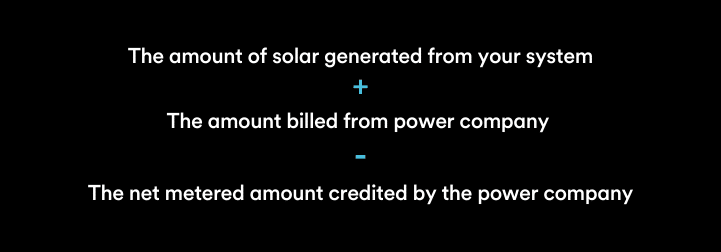Why make the switch to cleaner energy with solar? One big reason is that Iowan homeowners can even save more than $45,000 with solar!
You may be wondering how you can start seeing and understanding your savings after you install solar. No need to dread that pesky power bill anymore–it can now be your best friend.Installing solar changes what you’ll see on your electric bills. Pre-solar, your bill only showed the amount of power you consumed. With solar you’ll also see the excess sent back via the net meter, as well as any usage beyond what your solar produced.
These changes on your bill can be a bit overwhelming or cause uncertainty at first. Don’t stress! Purelight Power can help you every step of the way during your switch to solar.
Keep reading for more on how to read your power bill with solar, and how to calculate your actual energy usage.
Reading Your Power Bill with Solar
First, let’s take a look at what the main components of an electric bill in the Hawkeye state might look like.

The above example shows what a power bill might look like from MidAmerican or Alliant once you have solar installed. You’ll see the amount you owe along with a breakdown of that amount by kWh for the month.
Next, let’s break down what each new section of your bill means after you’ve installed solar.

The total current charge is simple: it’s what you owe. In this example, the homeowner owes roughly the standard connection fee every homeowner in Iowa with grid-tied solar will pay every month.
You’re probably used to looking for your meter number on your bill. With solar, you’ll also see a second meter number added to your bill. In this view, we see the meters are named delivered and received.

The meter marked received is the energy you’re sending back through net metering.
You can also see the amount you’ve pulled from the grid. This usually happens during the night, or in a storm, when your solar panels can’t produce energy. That amount is found on the top line next to the meter marked as delivered.

Under that amount is your net meter amount. That amount shows how much extra energy you produced and sent back to your local grid. This should be a negative number, since it’s not energy you’re using.
One important note: your net metered amount is recorded at time of use. You can still pull energy from the grid even if you’re producing enough to send some back. That doesn’t mean your solar isn’t working correctly!
For instance, in the middle of the day when the sun is high you’ll send excess energy back onto the grid with net metering. But at night, you’ll likely use some power from the grid.
Depending on the amount of offset your system was designed for, your net metering can offset some or all of the power you would pull from the grid.
In this example, the homeowner used 421 kWh of energy from the grid. They also sent energy back to the grid and received credits worth 433 kWh.
The amount pulled from the grid minus the amount sent back becomes the amount you’re billed for.

The homeowner in our example was billed 421kWh, but had a credit worth 433 kWh. In the end, the homeowner only ends up paying the standard grid connection fee (named the basic service charge here).
But does that mean that the homeowner’s actual usage was 421 kWh? Or was it 433 kWh?
Neither number is the actual energy usage. However, with those two numbers we can determine the actual energy usage you’re using at home.
Why Does My Actual Power Usage Matter?
Paying attention to your actual energy usage with solar installed can help you keep your energy habits in check. Keeping an eye on your bill and energy usage helps you avoid any unwanted surprises!
Switching to solar allows you to have clean and renewable energy, with a system specifically designed to meet your energy needs.
In order to evaluate how much power your solar system will generate, when you go solar with Purelight Power you’ll work with your project team providing them with your power bills. The design team uses those bills to assess your annual and monthly usage.
If you make any major changes to how you use energy in your home after solar is installed, that will show up on your power bill. Your solar energy system can’t adjust to meet an unexpected increase in energy consumption above what it was designed to generate.
Monitoring your actual power usage helps you make the most of your savings with solar.
Calculating Your Actual Power Usage with Solar
Finding your actual power usage with solar installed is fairly simple. You’ll need to know the kWh you’re billed for and the kWh you’re credited for on your power bill, as well as some information from your solar monitoring app.
On your monitoring app, you can find the information you need when you are in the graph view. From there, toggle to view the monthly graph view. You can now see how much energy in total your solar energy system produced per month.

Let’s take a look at this equation assuming our homeowner’s app shows they generated 702 kWh total for the month.
702 (amount generated) + 421 (amount billed) – 433 (net metered amount) = 690
The homeowner’s actual energy usage was 690 kWh.
Switch to Solar with the Experts
Ready to take your savings to the next level? Our local solar experts are here to help you every step of the way. Take back the power from greedy utility companies and save with solar!
See if your roof qualifies for our $0 out of pocket program today.
Purelight Power’s local and friendly solar experts are ready to help make the switch to solar easy for you.




